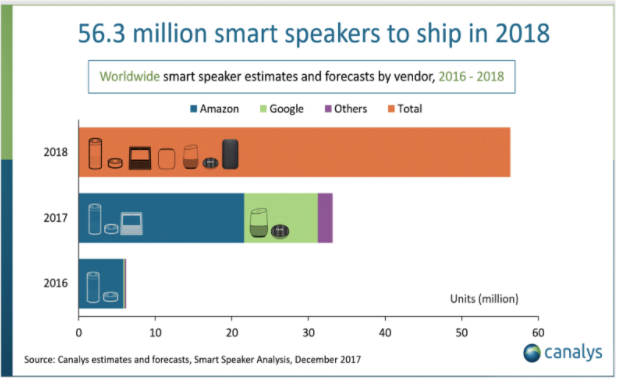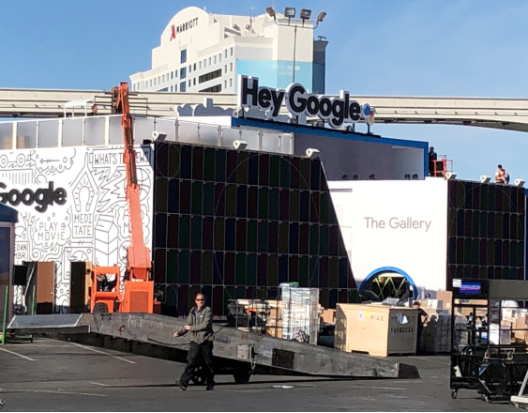Claims are a paradox for the insurance industry. Neither consumers nor insurers want claims to occur, but, when they do, they are critically important to both parties. Consumers want speedy resolutions, clear communications about status and, as a bonus, a personal touch. Insurers are looking for efficiency and accuracy and to eliminate the risk of fraud or litigation with claimants.
When the claims process breaks down, consumer satisfaction falls and insurer costs go up – that is the penalty for a bad claims experience. In this sense, every claim is a “moment of truth.” In the low-touch relationship between consumers and their insurance companies, claims handling may represent the most important and meaningful interactions.
That is why insurers are advised to look beyond mere cost savings and seek a richer, more data-driven and analytics-enabled customer experience that incorporates artificial intelligence (AI) and other advanced technologies. Insurers that get it right will transform claims from a necessary back-office function into a source of competitive advantage, market differentiation and increased customer loyalty.
Achieving a seamless customer experience
Insurers need to position themselves to win the future against an increasing range of competitive threats, such as insurtechs and other nontraditional players who may enter the market. With some insurtechs offering digital claims processing that can be initiated from mobile devices and completed within seconds, the pressure is on insurance companies to move beyond incremental improvements.
To achieve the vision of a seamless and differentiating customer experience, insurers should:
- Determine which existing data sets can be used to enhance the claims process
- Identify external data and advanced technologies that can be applied to further reduce costs and remove friction
- Define and emulate the practices from experienced leaders and the particular insurance use cases that can be piloted and deployed to greatest effect
- Begin to build the required data and analytics capabilities
 The age of experience: insurers vs. the leaders
The age of experience: insurers vs. the leaders
Historically, claims organizations have not been very effective or sophisticated in harnessing the wide variety of data available to them. Today, however, the opportunities are too compelling and potential threats to customer retention too severe to ignore. After all, today’s consumers have higher expectations than ever when it comes to efficiency, accuracy and personalization of service offerings – thanks to the very high standards by leading firms in e-commerce, consumer electronics and transportation. Seamless and intuitive self-service transactions are the rule in a wide range of industries, but an exception in insurance.
Customer experience expectations
Given that claims is often the most visible, customer-facing function in the insurance business, it is no wonder that it will be measured against other consumer-centric sectors and companies.
Insurers may ask themselves if they offer:
- Personalization capabilities, such as 1:1 pricing, choice of repair facilities, usage-based products, car pickup and delivery services and tailored recommendations
- Real-time status updates, fast-track claims payouts and electronic submission of documents
- A single point of contact and hasslefree experience overall
See also: The Cloud’s Vital Role in Digital Revolution
Social media has also upped the ante for insurers relative to the customer experience. The risks and costs of a bad claims experience can be amplified if customers choose to share their dissatisfaction through social media or consumer review sites. Social channels also give customers access to more information about the companies they do business with – information the companies do not necessarily control. The proliferation of advertising by attorneys seeking claimants suggests there are many dissatisfied claimants.
Data and analytics in the customer journey
The most important difference between the experience offered by insurers and that delivered by digital bellwethers from other industries is the latter’s use of data and analytics to define every step of the customer journey, from promotional offers and upselling recommendations to product returns and complaint handling. The bellwethers deeply mine their own customer records and external data sets (including social media streams) to thoroughly understand customers’ needs, gauge customers’ value and take specific actions based on those insights. This is a proven strategy to achieve customer-centricity at scale, with clear applications to the claims process.
 What matters to claimants — and how to deliver it
What matters to claimants — and how to deliver it
Our insurance consumer research confirms that speed, efficiency and transparency are among the most important characteristics of a quality claims experience. Better data can help streamline steps in the claims process, setting the foundation for an enhanced experience and, ultimately, no-touch claims resolution for many claims.
Streamlining claims processes
Consider the options for insurers seeking to streamline or fully automate “no-touch” or straight-through processing for many basic claims:
- Property and casualty (P&C) insurers can use historical repair data to dramatically decrease estimating times for different types of vehicles and homes. They can also better manage repair costs and quality based on deeper analysis of these data sets.
- Advanced telematics data (including video imagery) can be instantaneously captured during an automobile accident and downloaded from the cloud to automatically trigger a first notification of loss (FNOL) entry. Underwriters can “score” the data to determine the extent of loss relative to the automobile’s current value.
- Social media data can be analyzed to detect fraudulent claims.
- Drones and satellites can survey damage and collect information about property damage to initiate claims before a homeowner makes contact.
- Via intuitive apps or other interfaces, insureds can submit photos of damage to their homes or vehicles to initiate the claims process, provided there is no sign of fraudulent behavior (which analytics programs can evaluate).
- AI can be used to scan claims for the likelihood of fraudulent behavior, while robotic process automation (RPA) can automatically pay claims that fall within certain risk and financial parameters.
Customer engagement
Now consider the options for more timely and personalized service:
- “Chatbots” issue notifications to the policyholder regarding claims status and payment amounts.
- Voice analytics assesses customer sentiment during phone calls, with appropriate classification and prioritization of resolution.
- Behavioral analytics are applied to model likely customer needs and identify high-value policyholders or those likely to dispute a claim.
- Analysis of customer records can identify claimants facing renewal and good candidates for purchasing additional products.
In some of these cases, a quality claims experience can pay immediate dividends. In all of them, insurers can engage at key points during the claims life cycle, with accurate and consistent information delivered on a timely and transparent basis. At the same time, claims teams can focus on high-value interactions, high-risk claims and other exceptions.
Common use cases for data and analytics in claims
- Satellite and drone imagery: capture and analyze satellite data for more accurate damage assessments after storms or natural disasters
- Voice/biometrics: analyze recording of contact center conversations to identify customers at risk of a negative claims experience, and to match the right claims handlers to the right claimants
- Automation and no-touch processing: leverage RPA to process all low-risk claims under a certain threshold; then expand straight-through processing to a broader pool of losses, reviewing claims types and policyholder history to evaluate claims risk
- Vendor analytics: Combine internal data and geospatial modeling techniques to determine best-performing vendors
Claims transformation in action: addressing the claims process with telematics data
 First steps forward: where to start for a better claims experience
First steps forward: where to start for a better claims experience
As the previous examples show, there are many steps in the claims process that insurers can digitize and streamline for a better experience, no matter where they are on the maturity curve today. The path to full claims transformation is traversed in a series of well- thought-out steps that produce useful learnings and incremental value. Substantial improvements do not necessarily require new technology or huge teams of data scientists.
Most insurers can and should start with the data they already have before looking to external data streams or adopting RPA, AI or other advanced technologies. They must also recognize that these once-futuristic-seeming technologies are ready for everyday use in claims.
Data
The priority should be to use data to create full views of individual claims from multiple perspectives. Internally, that means transactional data and historical customer data. Useful external data streams include:
- Weather data
- Consumer credit data
- Medical billing patterns
- General loss details information
- Social media
All of these inputs will help evaluate future risk and leakage risks and support potential process and experience improvements.
See also: Go Digital… but Don’t Change Who You Are
Technology
More mature organizations will look to leverage new data storage and management technologies, such as data lakes, as the basis for advanced analytics and real-time visualization.
The most forward-looking insurers may build out data science teams to probe large and diverse data sets stored in analytics ecosystems.
Machine learning and visualization techniques can help predict claims risk with greater accuracy and certainty. They can also provide a consistent claims handling approach relative to unbiased reserving, litigation, subrogation and other claim processes. It is important to note that the benefits of more data and more effective analytics extend beyond the customer experience in claims.
Organizational factors
A better experience in claims is not simply a matter of better technology. Culture and a willingness to embrace change also matter. Test-and-learn approaches may be necessary for insurers with limited digital capabilities. For instance, they may begin by piloting automated processing for claims of relatively small amounts or trying bot-driven notification systems to improve communications. Many insurers must overcome risk-averse cultures to encourage experimentation and “fast failures” in the spirit of learning what works.
Some early-adopting insurers have embraced analytics labs or customer experience centers of excellence, where relatively low-risk and low-cost experiments can be carried out in controlled environments. For instance, organizations can analyze the costs and benefits of no-touch processing for claims within certain parameters and creating special “SWAT teams” of experienced claims adjusters to focus on the claims that merit human review and intervention.
The path forward to enhanced claims experience
No matter where they are on the maturity curve, claims organizations can start to advance the experiences they offer.
 The bottom line: the experience is everywhere
The bottom line: the experience is everywhere
Customer experience was once largely the realm of marketing and service teams. Now, the proliferation of digital channels means the customer experience is everywhere customers interact with companies – from social media to brick-and-mortar spaces to billing and accounting. Further, the experience matters most where customers say it does. In insurance, that means the claims process.
To seize this unique “moment of truth” opportunity to strengthen customer loyalty and boost retention, forward-looking insurers will leverage an expanded set of data and adopt more sophisticated analytical tools and techniques. Indeed, more effective use of data and analytics is one of the best ways for insurers to simultaneously improve financial performance, differentiate from competitors and deliver what customers want, which in claims is a fast, accurate, transparent and personalized experience.
































